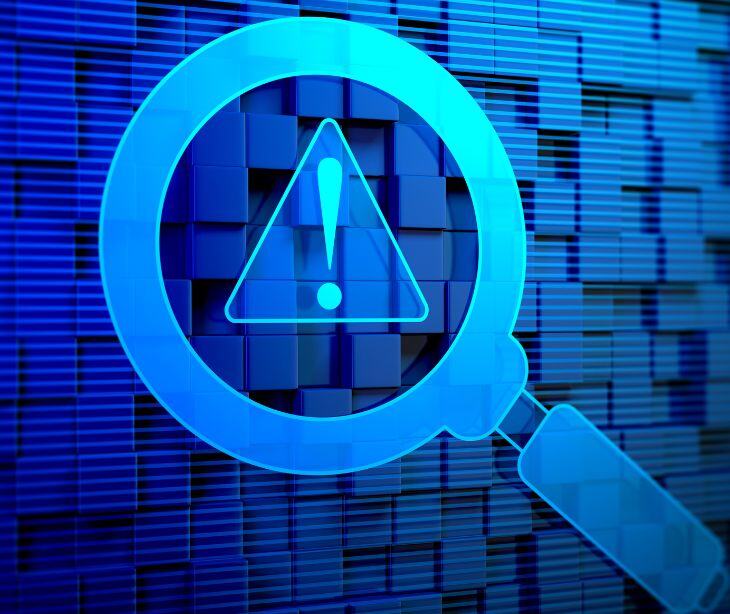
Healthcare employees play an important role in email security. They are not just end users but active guards and communicators of sensitive information. The latter two roles are especially true given the advancement in email technology along with the increase in cyberattacks over the past few decades.
Email protection for healthcare organizations must be comprehensive and must include employees as active participants. By utilizing HIPAA compliant email and educating employees on its value, healthcare organizations can keep themselves and their patients secure and provide more comprehensive patient care.
What is email security?
Email security protects email correspondence from unauthorized, malicious activity. This year, the number of worldwide email users has reached 4.6 billion. Moreover, nearly 376 billion emails are currently sent daily. Given these statistics, it’s no wonder that email breaches are widespread and commonplace. In 2021 alone, there was a global average of 16.5 leaked emails per 100 users.
Every business that uses email, then, must incorporate an email security strategy. Email security should include a complete set of safety measures that work together to keep email communication secure, whether inbound, outbound, or in storage. There are several benefits of strong email security:
- Protection of employees and customers
- Privacy of information
- Enhanced productivity and confidentiality
- Compliance with data protection laws
The consequences of a successful email breach can be severe, even leading to business and financial losses. For healthcare organizations, a data breach can also lead to compromised patient information and even patient death.
The need for email security in healthcare
HIPAA stands for the Health Insurance Portability and Accountability Act of 1996. The legislation sets national standards for the defense of medical records and patients’ protected health information (PHI). Healthcare organizations must comply with HIPAA to protect patient privacy and safeguard sensitive health information.
HIPAA email communications are largely governed by the Privacy and Security Rules. The Privacy Rule sets the standards for protecting PHI, including when it can be disclosed and to whom. The Security Rule requires covered entities to implement administrative, physical, and technical safeguards to protect electronic protected health information (ePHI).
HIPAA allows for the inclusion of PHI in email but requires certain safeguards to guard against unauthorized access. There must be a structured system in place to ensure patient confidentiality.
Learn more: Mitigating human error in email handling to prevent HIPAA breaches
What makes email HIPAA compliant?
HIPAA compliant email security must be layered to be effective. It must encompass methods that address access, storage, and the safe transmission of all messages. HIPAA compliant email security should include several of the different security features listed below.
- Up-to-date email policies and procedures
- The use of a HIPAA compliant email platform
- A signed business associate agreement (BAA) with the platform
- Encryption for data in transit and at rest
- Access and authentication controls
- Spam filters
- Malware detection tools
- An incident response plan
- Audit trails
Finally, good email security should include employee training as staff are the primary users and communicators of a healthcare organization. Employees who lack training and awareness must be a top concern.
Healthcare employees and their role in email security
Employees play a critical role in email security because they are the first lines of defense against cyberthreats. Employees can protect email by adhering to company policies, practicing good email hygiene, and being vigilant against malware. In a sense, they are healthcare organizations’:
- Security personnel
- Front-end communicators
- Data breach catchers and preventers
- Patient confidants
Every aspect of email security, from utilizing a HIPAA compliant email platform to employee training, is vital to safeguarding PHI. When healthcare employees understand that they play a role in protecting patients, they become proactive and vigilant.
Related: Steps to protect against phishing attacks
Cultivating a strong culture of security
A culture of security is one in which all employees actively participate in cybersecurity. The idea is that if an employee feels included, they will care more and work harder. Something especially crucial within vulnerable industries like healthcare.
Organizations with a solid security culture respond quickly and decisively to data breaches while those unprepared may experience devastating results. A culture of security in healthcare involves regularly training staff in data protection, HIPAA compliance, and recognizing threats such as phishing attacks.
Security training shouldn’t be a single, one-off session but a continuous journey. Teaching employees to utilize email protection blocks risks and protects patients from exposure. Fostering an environment that promotes responsible email use keeps everyone secure and safe. Encouraging employees to take responsibility for data protection and promoting a culture where everyone fights for security reinforces patient safety and a focus on patient care.
FAQs
Are all employee emails considered PHI?
Not all employee emails are automatically considered PHI under HIPAA regulations. However, emails containing identifiable health information like an individual’s medical treatment, diagnosis, or payment for healthcare services would be classified as PHI.
Can employers send emails containing PHI without violating HIPAA regulations?
Yes, employers can send emails containing PHI if they ensure they are encrypted, accessed only by authorized personnel, and comply with HIPAA regulations.
What are the most important HIPAA requirements for email security?
HIPAA requires encryption of PHI, access controls, audit trails, employee training, and incident response procedures. The policy must address each of these elements and specify how they'll be implemented and monitored.




